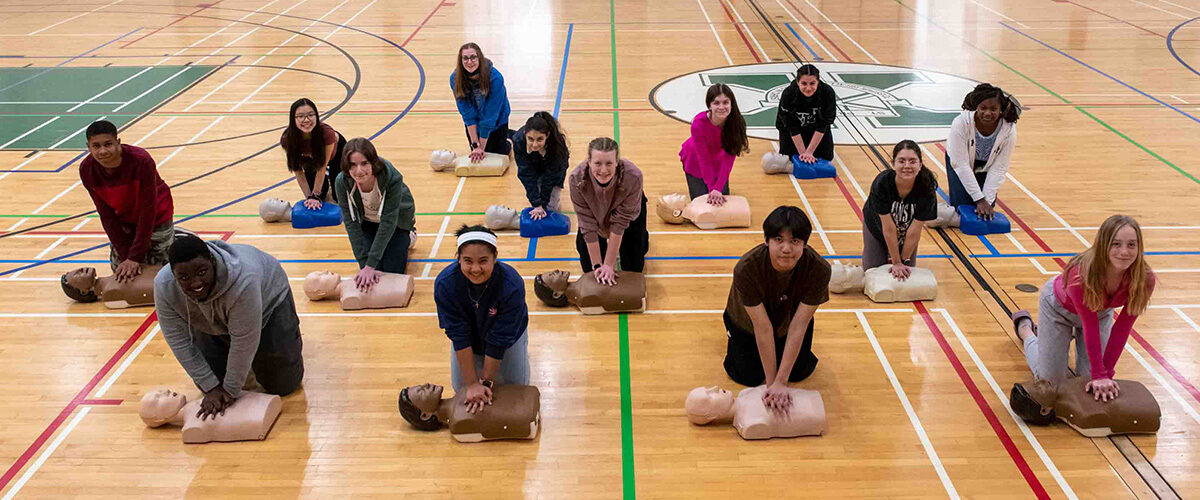The ACT High School CPR and AED Program:
- Teaches CPR and how to use an AED as a life skill.
- Empowers students with lifesaving skills they take to their present and future families and communities.
- Teaches youth how to take charge and help in an emergency, teaching leadership, civic responsibility, and building self-esteem.
Reaches 100% of youth.
Is a self-sustaining program that schools own and maintain over the long-term.

The importance of high school CPR and AED training
According to the Heart and Stroke Foundation of Canada, up to 60,000 out-of-hospital cardiac arrests occur each year in Canada. That is one cardiac arrest every nine minutes. Without rapid and appropriate treatment, most of these cardiac arrests will result in death.
Early CPR combined with early defibrillation can double survival rates from sudden cardiac arrest, according to the Heart and Stroke Foundation. An AED is a small, easy-to-use device with voice prompts that can tell when a heart stops beating effectively and can deliver an electric shock to help restart the heart.
With most out-of-hospital cardiac arrests occurring in homes or public places, early recognition of a cardiac emergency, early access to medical help (calling 911), early citizen CPR, and early defibrillation are critical to saving lives. The ACT High School CPR and AED Program empowers youth with lifesaving skills so they know how to react in an emergency.
What students learn in the High School CPR and AED Program
Through the ACT High School CPR and AED Program, all students learn the 4 ‘Rs’ of CPR:
- RISK factors for cardiovascular disease and the importance of adopting a heart-healthy lifestyle;
- How to RECOGNIZE a developing medical emergency;
- How to REACT, by calling 911 quickly and how to help while waiting for the ambulance to arrive; and,
- How to RESUSCITATE, or perform CPR and how to use an AED.
How the ACT High School CPR and AED Program works
The ACT High School CPR and AED Program is based on a successful community-based model of partnerships and support that makes the program FREE for all high school students:
- Schools commit to a long-term, self-sustaining program.
Training resources are donated to schools. These include durable mannequins, AED training units, teacher training coordination, and curriculum materials.
- High school teachers are trained as CPR and AED Instructors and teach students as a regular part of the curriculum.
The program is easy to set up and maintain over the long-term.

The Opioid Overdose Response Training enhancement to the ACT High School CPR and AED Program
Enhancing ACT’s High School CPR and AED Program with opioid awareness and opioid overdose response training is a next step in empowering youth to respond to life-threatening emergencies. ACT’s response to the opioid crisis empowers high school teachers to add the Opioid Overdose Response Training to the current CPR training, enhancing students’ lifesaving toolbox.
The training teaches students:
What are opioids and how do opioid overdoses happen
- What is Naloxone and how does it work
How to recognize a suspected opioid overdose
How to respond to a suspected opioid overdose, including calling 911 quickly, performing CPR if needed and administering nasal Naloxone spray, if available
The opioid-associated emergency module enables teachers to provide the theory portion of the education in an eLearning format to students as a self-paced learning tool. Teachers then provide the practical training portion to students in the classroom.





